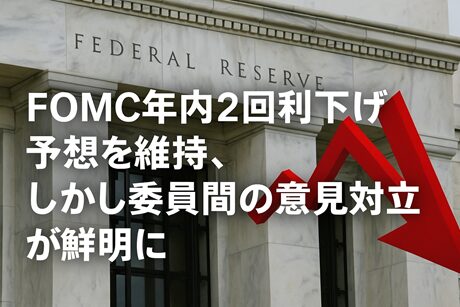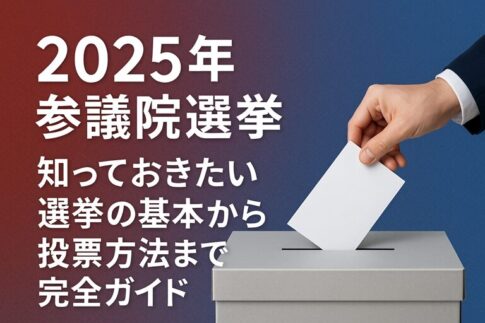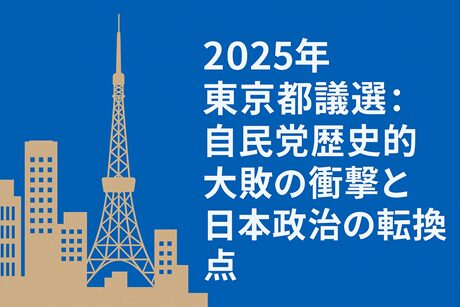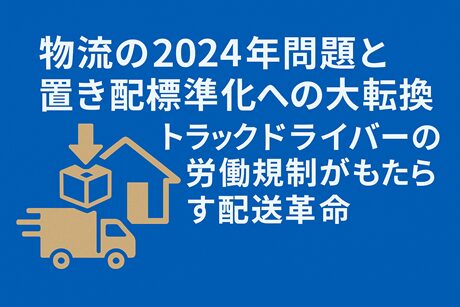目次
- 1 FOMC Holds Rates Steady Amid Growing Committee Division
- 1.1 FOMC Decision: Surface Stability Masking Internal Division
- 1.2 Powell’s Cautious Stance: “The Cost of Waiting is Low”
- 1.3 Trump Tariff Policy: The Fed’s Greatest Uncertainty
- 1.4 Economic Projection Revisions: GDP Downgrade and Inflation Upgrade
- 1.5 FOMC Statement Changes: Shifting Labor Market Perception
- 1.6 Market Reaction: Complex Dollar Movements
- 1.7 Monetary Policy Framework: The Fed’s Dual Mandate and Policy Judgment
- 1.8 Quantitative Tightening (QT) Developments
- 1.9 Global Economic Impact: Growth Slowdown and Rising Uncertainty
- 1.10 Monetary Policy Framework Review Discussion
- 1.11 Future Rate Cut Timing: Expert Views Diverge
- 1.12 Geopolitical Risks: Middle East Tensions’ Impact
- 1.13 Political Pressure and Fed Independence
- 1.14 Conclusion: Careful Navigation Amid Uncertainty
FOMC Holds Rates Steady Amid Growing Committee Division
The Federal Open Market Committee (FOMC) decided to maintain the federal funds rate target range at 4.25-4.50% at its June 17-18, 2025 meeting, marking the fourth consecutive meeting without a rate change. Markets had priced in a 97.5% probability of this hold as of June 12, making the decision itself unsurprising.
However, what emerged from this meeting was a significant widening of disagreement among FOMC members regarding the future path of monetary policy. While the median projection of two rate cuts in 2025 was maintained, the feasibility of achieving this has become increasingly uncertain. This article provides a comprehensive analysis of the meeting details and the future trajectory of monetary policy.
FOMC Decision: Surface Stability Masking Internal Division
The FOMC kept the policy rate at 4.25-4.50% and maintained its median projection of two rate cuts in 2025. This remained unchanged from the March Summary of Economic Projections (SEP), with the year-end 2025 median policy rate indicated at 3.875%.
However, a detailed examination of the “dot plot,” which shows individual committee members’ outlooks, reveals a clear division of opinion. For the year-end 2025 policy rate outlook, seven members now expect zero rate cuts (maintaining current levels), a significant increase from four members in March. Additionally, two members anticipate only one rate cut.
This results in a split among the 19 FOMC participants: 10 expecting two or more rate cuts, 7 expecting no cuts, and 2 expecting one cut. The number of participants expecting at least two additional cuts decreased to 11 from 15 in December, while those expecting one cut increased to 4 from 3, and those expecting no cuts jumped to 4 from 1.
This shift suggests the FOMC as a whole has become somewhat more hawkish (leaning toward tighter monetary policy). While markets had speculated the dot plot might be revised to show only one cut for the year, the median projection ultimately remained at two cuts.
Powell’s Cautious Stance: “The Cost of Waiting is Low”
Federal Reserve Chair Jerome Powell emphasized a continued data-dependent, cautious approach during his press conference. Let’s examine his key statements in detail.
“We are in a position to wait for more information about the economic outlook before considering adjustments to our policy stance,” Powell stated, reaffirming his previous position. He further noted that “the labor market is not calling out for rate cuts,” clarifying that there’s no urgency for early rate reductions.
In his May FOMC press conference, he remarked, “We have time to wait before policy adjustments, and the cost of waiting is relatively low.” Powell explained that the Fed considers the degree of deviation from employment and price stability goals, as well as the time needed to close each gap. From a risk balance perspective, he suggested that deterioration in employment conditions would likely be the decisive factor for rate cuts.
While the current unemployment rate remains at historically low levels with robust employment, attention is needed on the increasing trend in layoff announcements. This could become an important element in future policy decisions.
Trump Tariff Policy: The Fed’s Greatest Uncertainty
The most significant focus at this FOMC meeting was the economic impact of the Trump administration’s tariff policies. The Fed recognizes that while the real economic impact of Trump’s tariff policies may be limited, the uncertainty surrounding these policies and their effects remains extremely high.
St. Louis Fed President Musalem (a voting FOMC member in 2025) stated that the scenarios where tariffs accelerate inflation for 1-2 quarters versus having more prolonged price effects are “fifty-fifty,” adding that “the Fed will face uncertainty through the summer.” He cautioned against being “complacent” about current inflation expectation stability, noting reluctance to stake the Fed’s reputation and credibility on the “theory” that monetary policy should overlook temporary price increases.
Powell also indicated that continued large-scale tariff increases would likely lead to higher inflation, slower economic growth, and increased unemployment. However, whether tariff impacts remain temporary or become more persistent inflation effects remains unclear, ultimately depending on whether long-term inflation expectations can be maintained.
Short-term inflation expectation indicators have recently risen, with consumers and businesses citing tariffs as a contributing factor. The International Monetary Fund (IMF) also notes that in the current economic environment with higher inflation expectations than pre-pandemic levels, tariff increases are more likely to lead to upward inflation surprises.
Economic Projection Revisions: GDP Downgrade and Inflation Upgrade
The quarterly Summary of Economic Projections (SEP) released alongside the FOMC statement included significant revisions reflecting the impact of Trump administration tariff increases. The 2025 GDP growth rate was revised down to 1.4%, while the core PCE inflation rate was revised up to 2.5% from the previous 2.2%.
These revisions indicate that some FOMC members are already incorporating the effects of Trump’s policies. The upward revision to inflation particularly reflects concerns about tariff-induced price pressures.
Fed officials suggest the possibility of shifting to a rate-cutting cycle if tariff uncertainty resolves after summer and the risk of price increases spreading to inflation expectations remains low. However, Powell emphasizes that whether tariff impacts and long-term inflation expectation stability can be maintained remains key to determining if inflation becomes persistent.
FOMC Statement Changes: Shifting Labor Market Perception
The FOMC statement included important language changes. Regarding economic outlook uncertainty, the assessment shifted to “remains elevated, although it has diminished somewhat.” The previous language stating “risks to achieving employment and inflation goals have moved toward better balance” was removed and replaced with “the unemployment rate remains low, and labor market conditions remain solid.”
This change suggests the Fed has adopted a more optimistic view of current labor market conditions. However, this doesn’t necessarily mean reduced need for rate cuts; rather, it reflects a judgment that there’s no immediate need to rush policy changes.
Market Reaction: Complex Dollar Movements
Market reaction immediately following the FOMC decision showed complex movements. Initially, after the announcement of the rate hold and maintenance of two rate cuts for 2025, the decision was viewed as dovish (leaning toward easier monetary policy) since some had speculated a revision to one cut, causing the dollar to weaken temporarily.
However, the dollar subsequently strengthened following Powell’s cautious remarks during the press conference. His statement that “the cost of waiting is low” and negative stance on early rate cuts became factors supporting dollar buying.
This market reaction demonstrates investors’ sensitivity to subtle nuances in the Fed’s policy outlook. The details of committee member disagreements and Powell’s specific comments had greater market impact than the surface-level decision.
Monetary Policy Framework: The Fed’s Dual Mandate and Policy Judgment
Fed monetary policy is determined to achieve the dual mandate established in the Federal Reserve Act: “maximum employment” and “price stability (2% long-term inflation target).” These goals can sometimes conflict, requiring the Fed to constantly balance its policy operations.
Currently, the Fed prioritizes the following economic indicators in policy decisions:
For inflation, the Fed focuses on core CPI and PCE deflator excluding food and energy, monitoring whether inflation remains above the 2% target. The Fed also emphasizes survey-based (University of Michigan, Conference Board) and market-based (breakeven inflation rates) inflation expectations for gauging future inflation trends.
Regarding employment, labor market indicators including unemployment rate and nonfarm payroll growth are crucial for policy rate decisions. The current labor market continues to be assessed as solid with unemployment at low levels.
For economic growth, real GDP growth rate is also an important factor. Trump’s tariff policies are expected to lead to downward GDP growth revisions and upward inflation revisions, increasing economic outlook uncertainty.
Other indicators including ISM manufacturing and services indices, housing starts, retail sales, and consumer sentiment also factor into policy decisions.
Quantitative Tightening (QT) Developments
At the March FOMC meeting, alongside maintaining policy rates, the committee decided to slow the pace of quantitative tightening (QT). This considered potential reserve fluctuations related to debt ceiling issues, with Governor Waller voting against maintaining the current QT pace.
The Fed implements quantitative tightening to curb economic overheating and excessive inflation by withdrawing liquidity from markets. Decisions to reduce monthly Treasury redemption caps and slow asset reduction pace aim to avoid financial market disruption rather than signal a policy shift toward easing.
Global Economic Impact: Growth Slowdown and Rising Uncertainty
The global economy continues experiencing growth deceleration due to U.S. tariff policies and other rising uncertainties. The IMF’s April 2025 World Economic Outlook revised global real GDP growth down to 2.8% for 2025, a 0.5 percentage point reduction from January projections, primarily due to downward revisions for the U.S. and China.
The OECD’s March 17 interim economic outlook also projected growth downgrades and inflation upgrades for many countries including the U.S., Canada, and Mexico, citing Trump administration tariff increases as the primary factor. The OECD revised U.S. real GDP growth down to 2.2% for 2025 and 1.6% for 2026 due to U.S. tariff policy changes.
Both the IMF and OECD warn that expanding and prolonged trade wars could adversely affect the global economy, with tariffs potentially triggering inflation resurgence. Trade barriers generally stagnate trade transactions and likely have negative global economic impacts.
Monetary Policy Framework Review Discussion
According to FOMC minutes, the Fed continues discussing monetary policy framework reviews considering economic environment changes. New York Fed President Williams notes that post-pandemic supply shocks have made inflation expectations more prone to rise, warning that neglecting rising inflation expectations could lead to persistent inflation concerns.
While this review may not favor those seeking lower rates, if the Fed prioritizes market credibility, choosing policies suited to the economic environment would be wiser.
Future Rate Cut Timing: Expert Views Diverge
Expert opinions differ on future rate cut timing.
Sumitomo Mitsui DS Asset Management maintains its view that Trump tariff impacts will manifest in the U.S. economy, expecting 25 basis point cuts each in October and December.
Many experts believe the FOMC won’t rush to resume cuts, expecting September at the earliest. This aligns with Powell’s repeated emphasis that “it’s appropriate to wait and observe until we can assess the data.”
Meanwhile, Monex Securities’ Tsuyoshi Yoshida suggests that based on the correlation between policy rates and unemployment, deterioration in June unemployment data released in early July could lead to rate cut resumption at the July FOMC meeting.
Geopolitical Risks: Middle East Tensions’ Impact
Additionally, market impacts from escalating Middle East tensions deserve attention. Reports of President Trump’s hardline stance toward Iran and consideration of military options could trigger “safe-haven dollar buying,” potentially supporting dollar strength.
Such geopolitical risks complicate Fed policy decisions. In risk-averse market environments, monetary policy effects may manifest differently than usual.
Political Pressure and Fed Independence
Powell is expected to emphasize that policy decisions depend entirely on economic indicators and outlooks, unaffected by political pressure, even when questioned about Trump’s rate cut demands or Fed chair succession nominations.
However, some suggest the Fed’s “stubbornness” could lead to worst-case economic scenarios. Flexible policy management aligned with economic reality is required while maintaining political independence.
The June 2025 FOMC meeting appeared to maintain status quo on the surface, but revealed complexity with widening committee member disagreements. While the projection of two rate cuts for 2025 was maintained, the dot plot shows significantly divided views on feasibility.
Powell’s repeated emphasis on “data dependence” means the Fed will carefully assess economic indicator trends before making policy decisions. How Trump tariff impacts manifest in inflation and economic growth will particularly key future monetary policy.
While prioritizing inflation expectation stability, the Fed must respond quickly to labor market deterioration. How to balance these priorities becomes the major challenge for coming months.
Market participants must continue monitoring multiple factors including monthly employment statistics and inflation indicators, specific tariff policy implementation, and geopolitical risk developments while making investment decisions.
Whether the Fed’s “wait-and-see stance” succeeds or forces policy reversal will be answered by economic data and market developments in coming months. In this high-uncertainty environment, continued attention focuses on the Fed’s navigation.
References
- JETRO – U.S. Business News
- Dai-ichi Life Research Institute – FOMC Analysis Report
- Sumitomo Mitsui DS Asset Management – Market Report
- Nissei Research Institute – Economic & Financial Flash
- Daiwa Institute of Research – FOMC Report
- Sumitomo Mitsui Trust Bank – Market Column
- OANDA Japan – FOMC Policy Rate









Leave a Reply